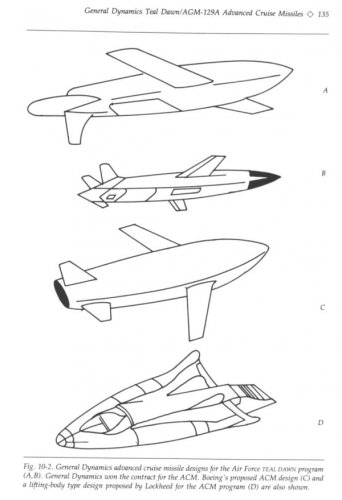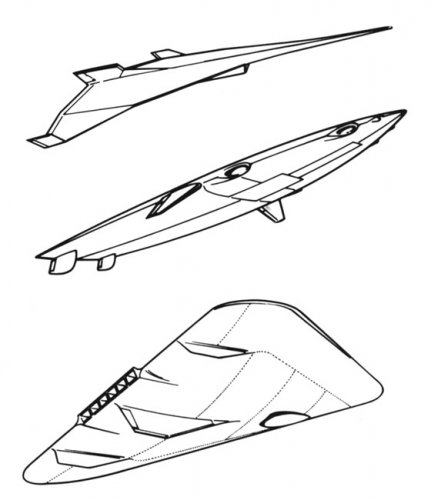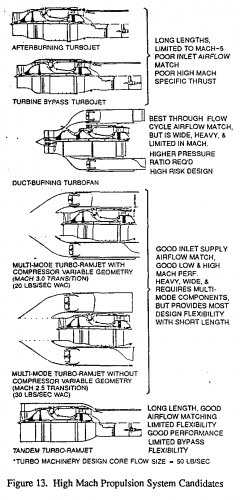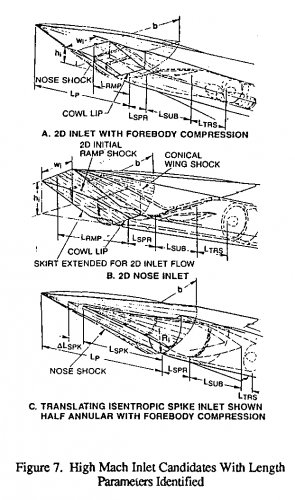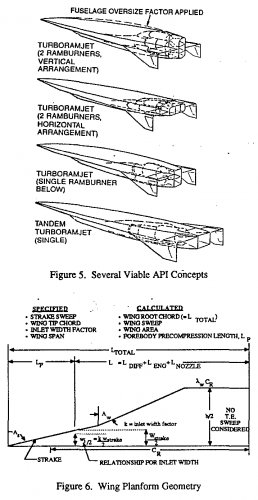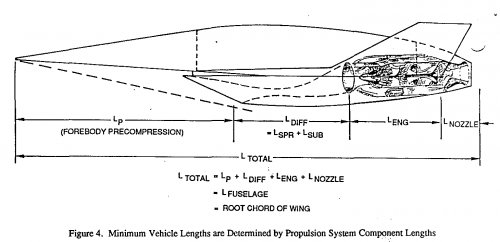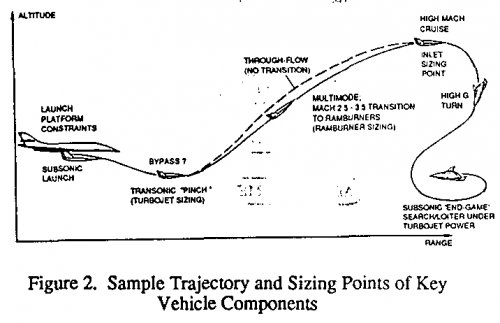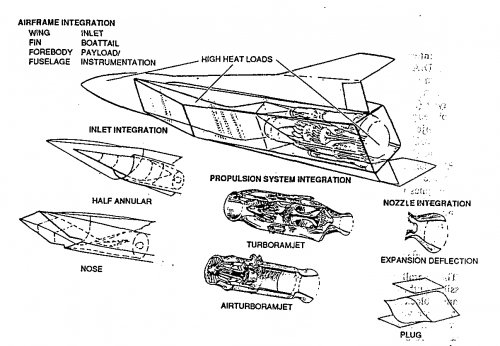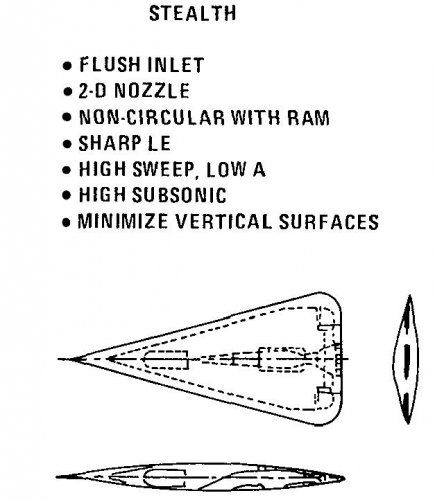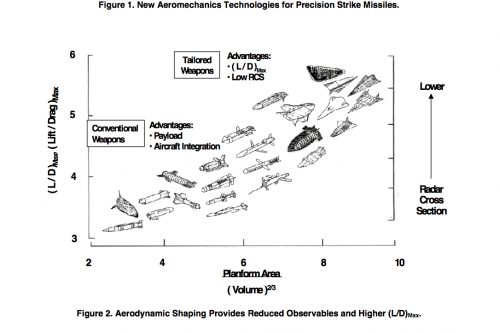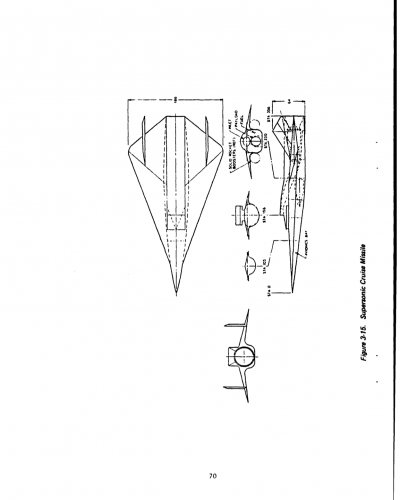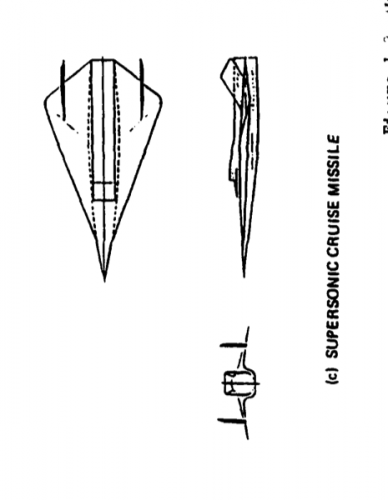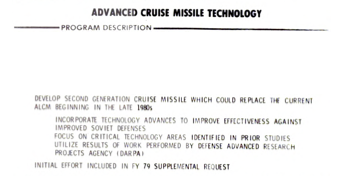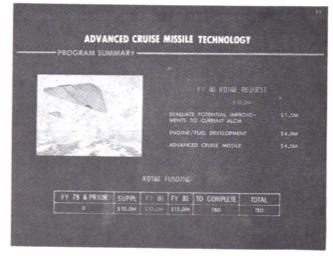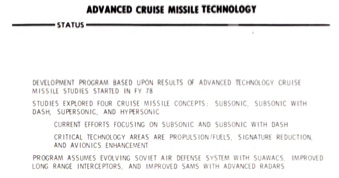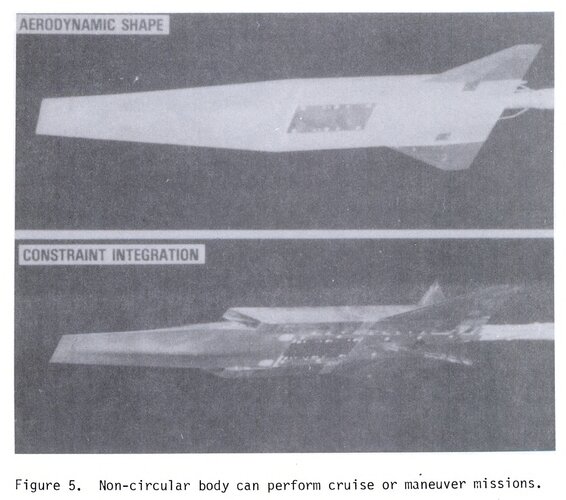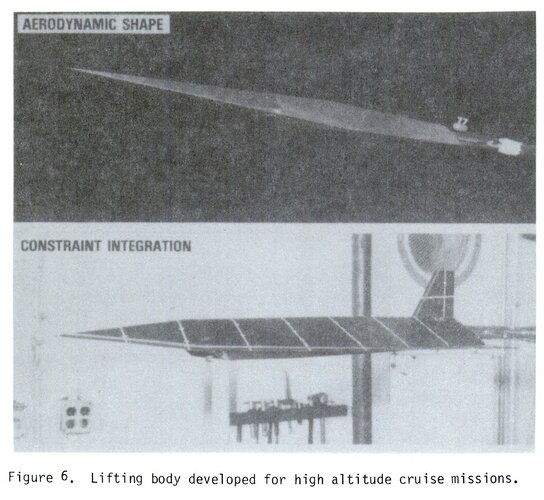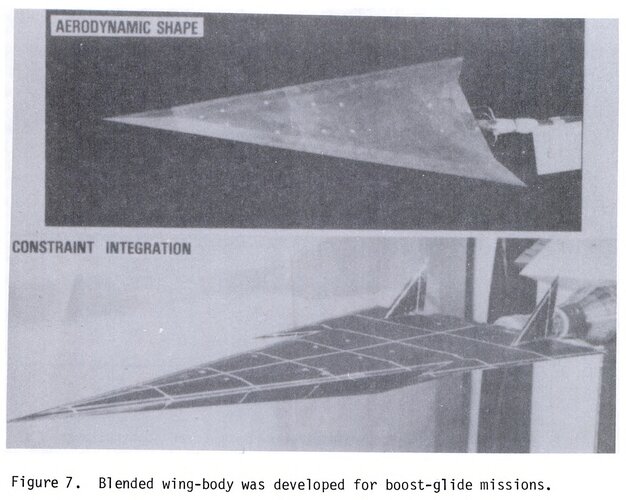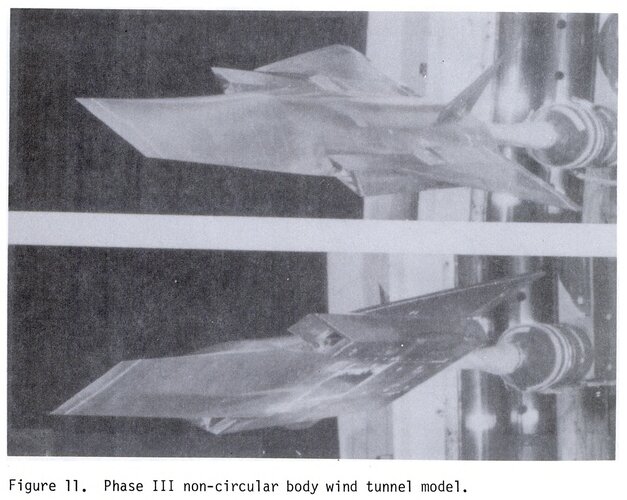The U. S. Air Force has also been supporting investigations in Advanced Technology for Cruise Missiles (ATCM) with contracts at Boeing Aircraft Co., McDonnell-Douglas Astronautics Co., General Dynamics/Convair, Rockwell International , and Martin Marietta. Research is, or will be, supported in several areas of aerodynamics, propulsion, and structures and materials based on the needs pointed out by several mission-effectiveness studies. These research areas include investigations of radar absorbing primary structure (RAPS) as well as the use of radar absorbing material (RAM) for coating a primary structure to reduce the radar cross-section (RCS). Research on advanced composites continues to receive strong support. In aerodynamics, a study entitled "Aero-configured Missiles" has been under way at McDonnell-Douglas-East. The objective of Phase I is to provide upper bounds on available lift - drag ratio, maximum lift coefficient, and minimum drag coefficient that an aerodynamic configuration can achieve if no limitations are placed on the design. Although aimed at the supersonic-hypersonic speed regime, some transonic work is included. The characteristics of the numerous configurations are predicted by means of available computer programs and checked by wind tunnel tests at the Arnold Engineering Development Center (AEDC) wind tunnel facilities.
The second phase will narrow the configuration choices by introducing the effects of propulsion systems. The third phase will introduce further missile system limitations, including requirements for reduced radar cross-section. The latter consideration has actually had some influence on Phase I.
The propulsion program includes studies of changes in supersonic inlet design to improve RCS, tests of woven-carbon-carbon material for the walls (without insulation) of conventional hydrocarbon-burning ramjet combustors in supersonic missiles , and studies of carbon slurry and boron slurry fuels. As noted above, the structures work is concentrated on research on advanced composites and on the use of radar absorbing primary structure.
The importance being placed on decreasing radar signatures is noted by the fact that RCS studies have been made on several missile configurations as well as studies of the effects of high temperature on RAM.

